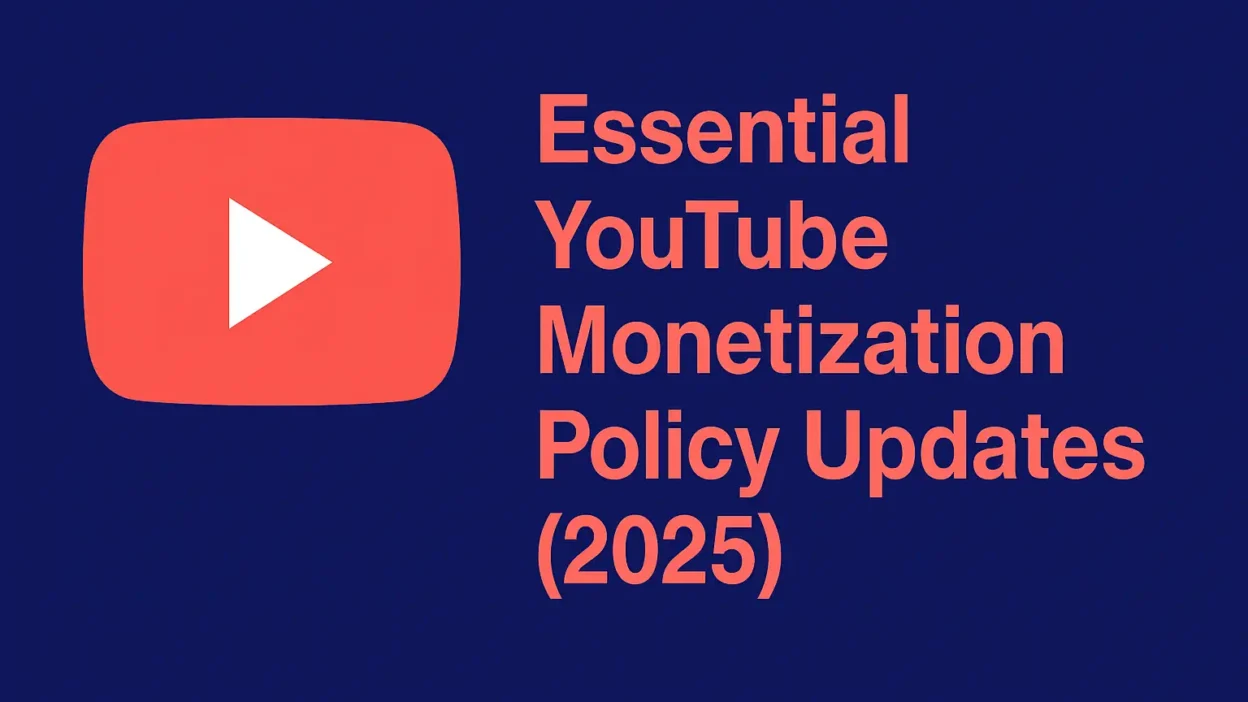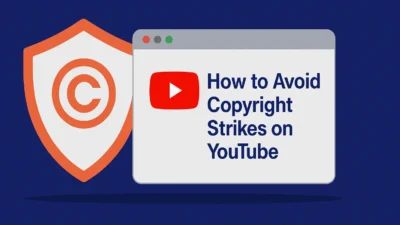If you’re a content creator in 2025, understanding the latest YouTube monetization policy updates is essential for maintaining revenue, avoiding demonetization, and unlocking new earning tools. With over 50 million creators now on the platform, YouTube has adjusted its policies to better reflect the evolving creator economy, brand safety, and advertiser expectations.
In this comprehensive update, we break down the major changes, additions, and best practices every monetized creator needs to know.
Major YouTube Monetization Policy Changes in 2025
1. Stricter Content Eligibility Reviews
YouTube’s review system in 2025 is more robust than ever. Every video that qualifies for monetization now undergoes advanced AI screening as well as occasional manual reviews. This system scans for violations in context—not just keywords—meaning creators with inconsistent messaging or borderline content across uploads are more likely to face delays or rejections.
New channels can expect longer wait times during the initial review process. For returning or established creators, consistency in tone and originality across all uploads is key to quick approvals.
Tip: If your content includes satire, commentary, or edgy humor, proactively include verbal or on-screen disclaimers and use precise titles and descriptions to help reviewers understand intent.
Tip: Avoid borderline content. If your videos include sarcasm, commentary, or edgy humor—add disclaimers and context.
2. Updated Advertiser-Friendly Guidelines
In 2025, advertisers are more cautious than ever. YouTube now gives them expanded control to avoid content that doesn’t align with their brand identity. This includes satire, reaction videos, unboxing, and even political commentary. Creators in these genres are seeing reduced ad revenue unless their videos are contextually rich and clearly labeled.
YouTube’s enforcement has also expanded to cover AI-generated content and compilations. Edited clips with no substantial commentary or value-add are especially at risk of demonetization or exclusion from premium ads.
New Rule: You must transform or significantly comment on reused content to qualify for monetization.
🔗 YouTube’s Advertiser-Friendly Guidelines
3. Shorts Monetization Revamp
YouTube Shorts, once considered purely for reach, is now a full-fledged monetization stream. In 2025, YouTube introduced a dedicated Shorts Ad fund as well as a per-view RPM payout model that allows creators to earn passively from every short that meets guidelines.
To qualify:
- Your channel needs at least 1,000 subscribers
- You must have received 10 million public Shorts views in the last 90 days
- All Shorts must respect music licensing rules and avoid reuploads of viral content from other platforms
The platform has also improved attribution tools to ensure content originality. Creators using licensed music must comply with tighter guidelines or risk demonetization.
Learn how to grow with our YouTube Watch Hours Hack
4. Community Guidelines Strikes Now Impact Monetization
YouTube now considers your channel’s strike history when determining monetization status. Even a single Community Guidelines strike can temporarily pause your monetization access for 30 to 90 days, affecting revenue from Super Thanks, AdSense, or memberships.
This change is designed to hold creators accountable across the platform and reinforce trust with advertisers. It also places additional weight on your past behavior—not just current content.
Appeals are possible, but creators with more than one strike will likely face longer delays for reinstatement.
What it means: One mistake could pause your earnings—always double-check content against policy.
What it means: Creators must now treat guideline warnings as serious revenue threats.
5. New Monetization Tier for Smaller Creators
Recognizing the growing creator base, YouTube has introduced a new tier called the Starter Partner Program to give up-and-coming creators access to early monetization tools without needing full AdSense approval.
Eligibility:
- 500+ subscribers
- 3 published videos in the last 90 days
- Either 3,000 watch hours OR 3 million Shorts views in the last 90 days
This tier unlocks:
- Channel Memberships (monthly subscriptions)
- Super Thanks (direct tips from viewers)
- Shopping Affiliate tools
📌 Great for niche, consistent creators who are just getting started and want to monetize without waiting for the 1,000-subscriber, 4,000-hour milestone.
📌 Great for niche channels and new creators who aren’t eligible for full AdSense monetization.
Best Practices to Stay Monetized in 2025
- Read YouTube’s Policy Updates Monthly – Rules change fast.
- Use Your Own Voice & Content – Avoid generic, repetitive, or unoriginal formats.
- Disclose Sponsorships Clearly – Use YouTube’s built-in tools.
- Avoid Policy Grey Zones – Stay clear of misinformation, controversial claims, or edgy comedy unless you’re clearly educational or newsworthy.
- Focus on Viewer Engagement – Watch time, likes, and comments all now feed into your monetization stability rating.
Tools to Help With Policy Compliance
- YouTube Studio → Monetization Tab: Real-time monetization status
- Google’s Policy Center → Personalized compliance tips
- ChatGPT (with API) → Draft monetization-safe scripts
- vidIQ & TubeBuddy → Content scoring for SEO and advertiser-friendliness
Bold Conclusion: YouTube Monetization Policy Updates (2025)
YouTube is evolving—and creators must adapt. The 2025 monetization policy updates emphasize originality, advertiser safety, and platform trust. The new tier system opens doors for smaller creators, but stricter guidelines mean monetized creators must consistently meet quality and policy expectations.
The bottom line? Stay informed, stay original, and treat your channel like a business.
FAQs About YouTube Monetization Policy Changes
Q1: Can I monetize reaction videos in 2025?
Only if they include substantial commentary, editing, or original perspective.
Q2: Will I lose monetization for one policy strike?
Possibly. Even one strike can delay new monetization tools or cause temporary demonetization.
Q3: Is YouTube demonetizing AI-generated content?
Not all AI content, but reused, low-effort, or synthetic voiceovers without original value are at risk.
Q4: How do I appeal a monetization decision?
Inside YouTube Studio → Monetization → Appeal with explanation and timestamps.
Q5: What’s the new “Starter Partner” tier?
A monetization-lite program for smaller channels to access memberships, Super Thanks, and affiliate tools.



